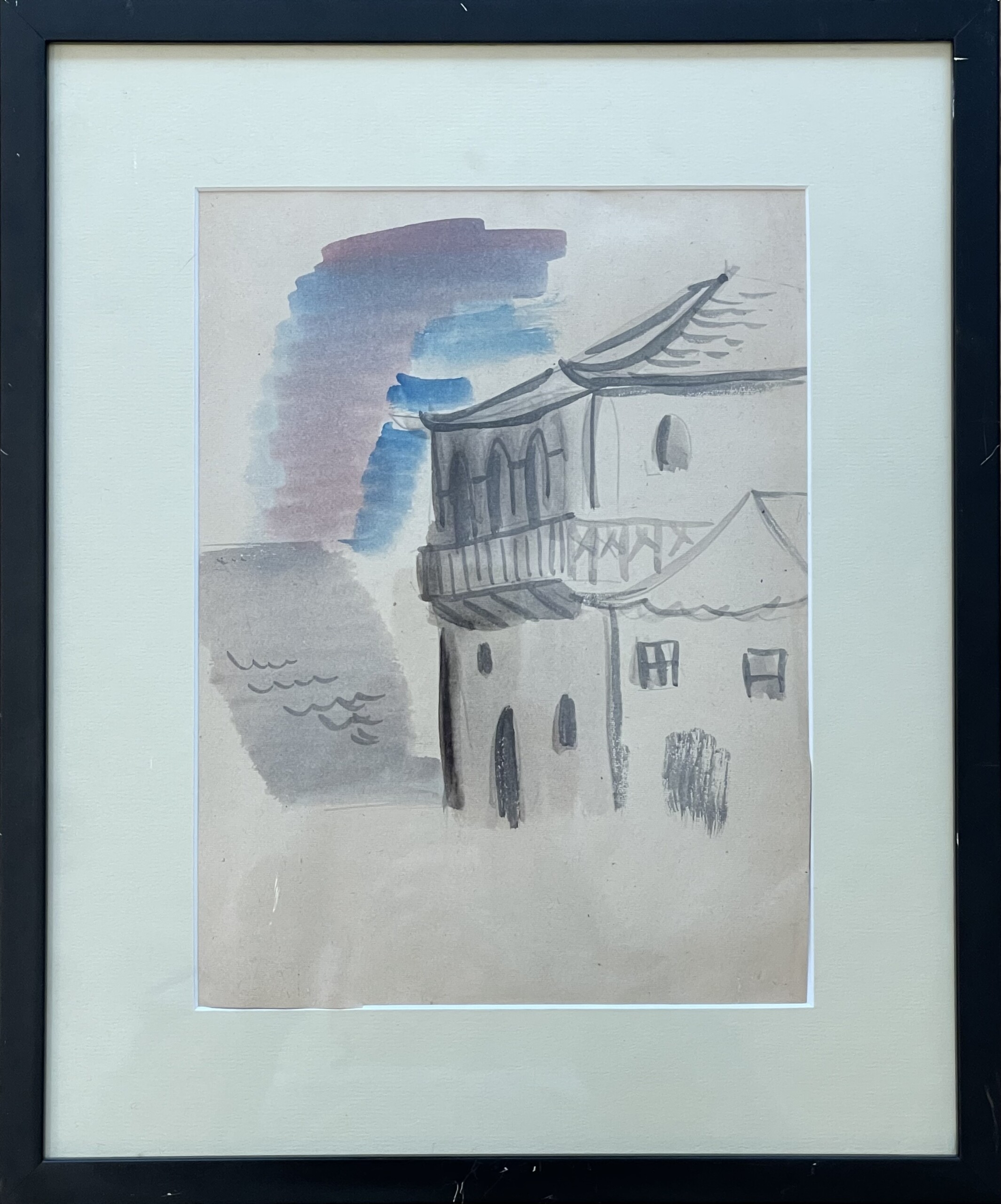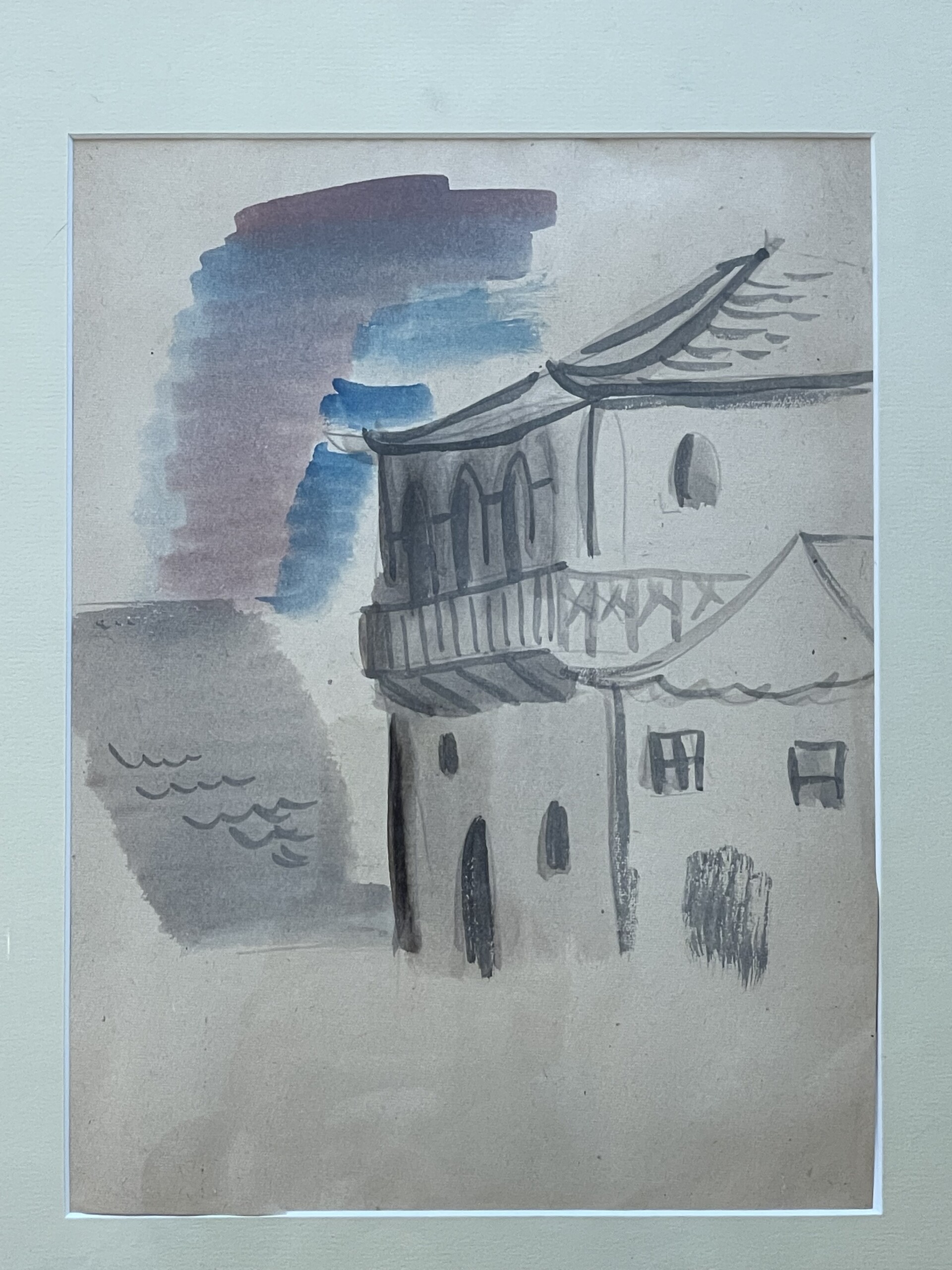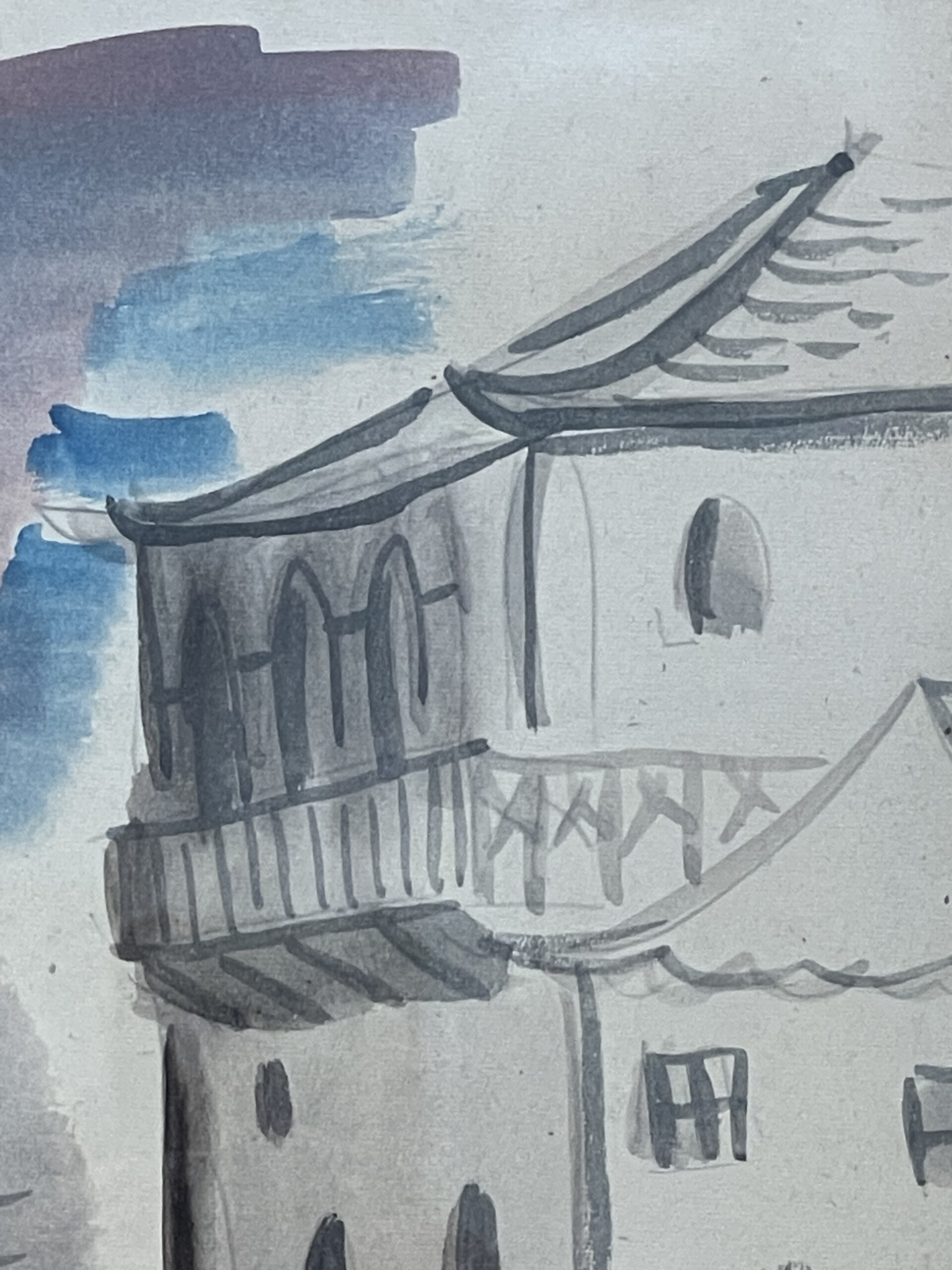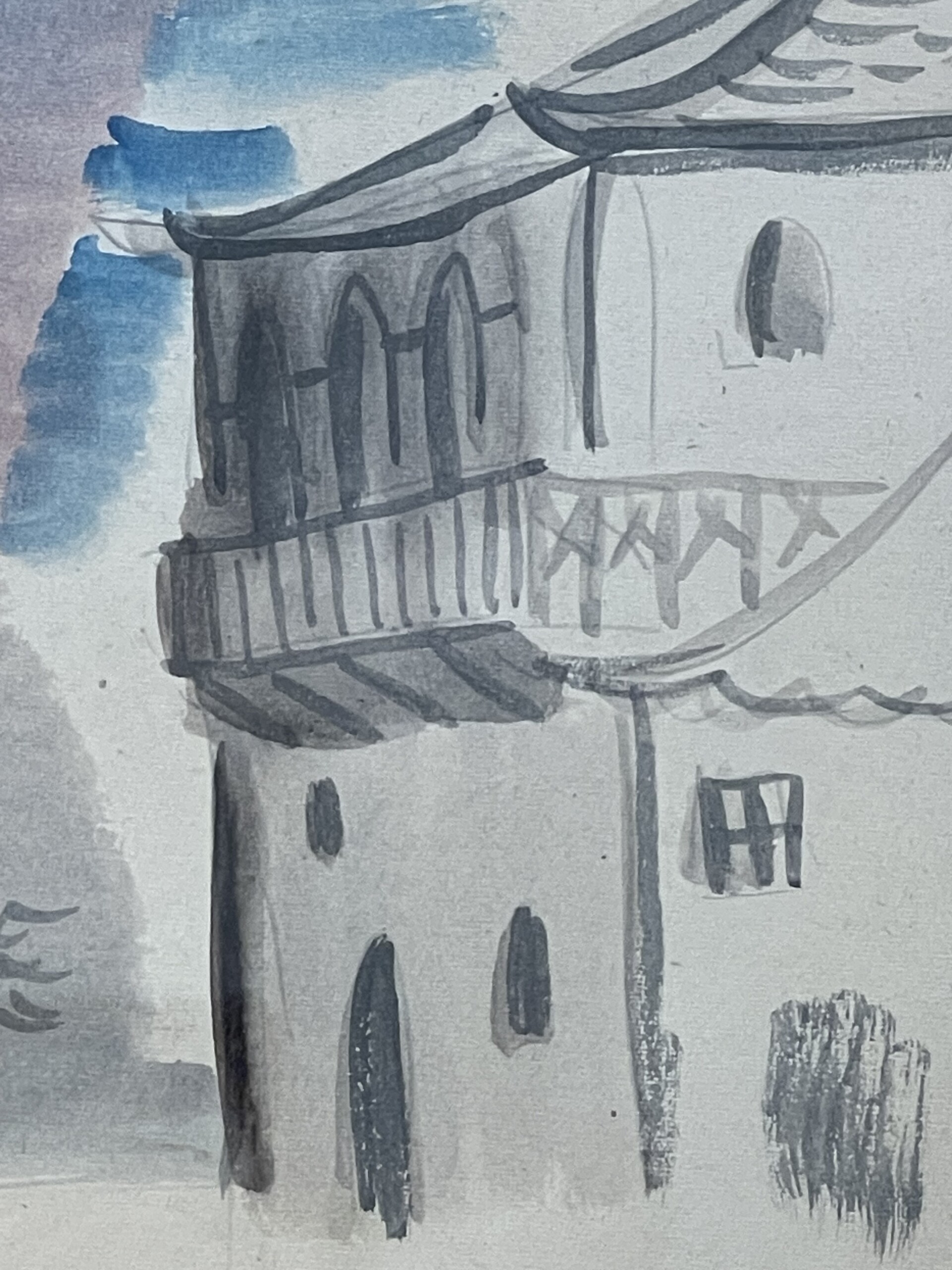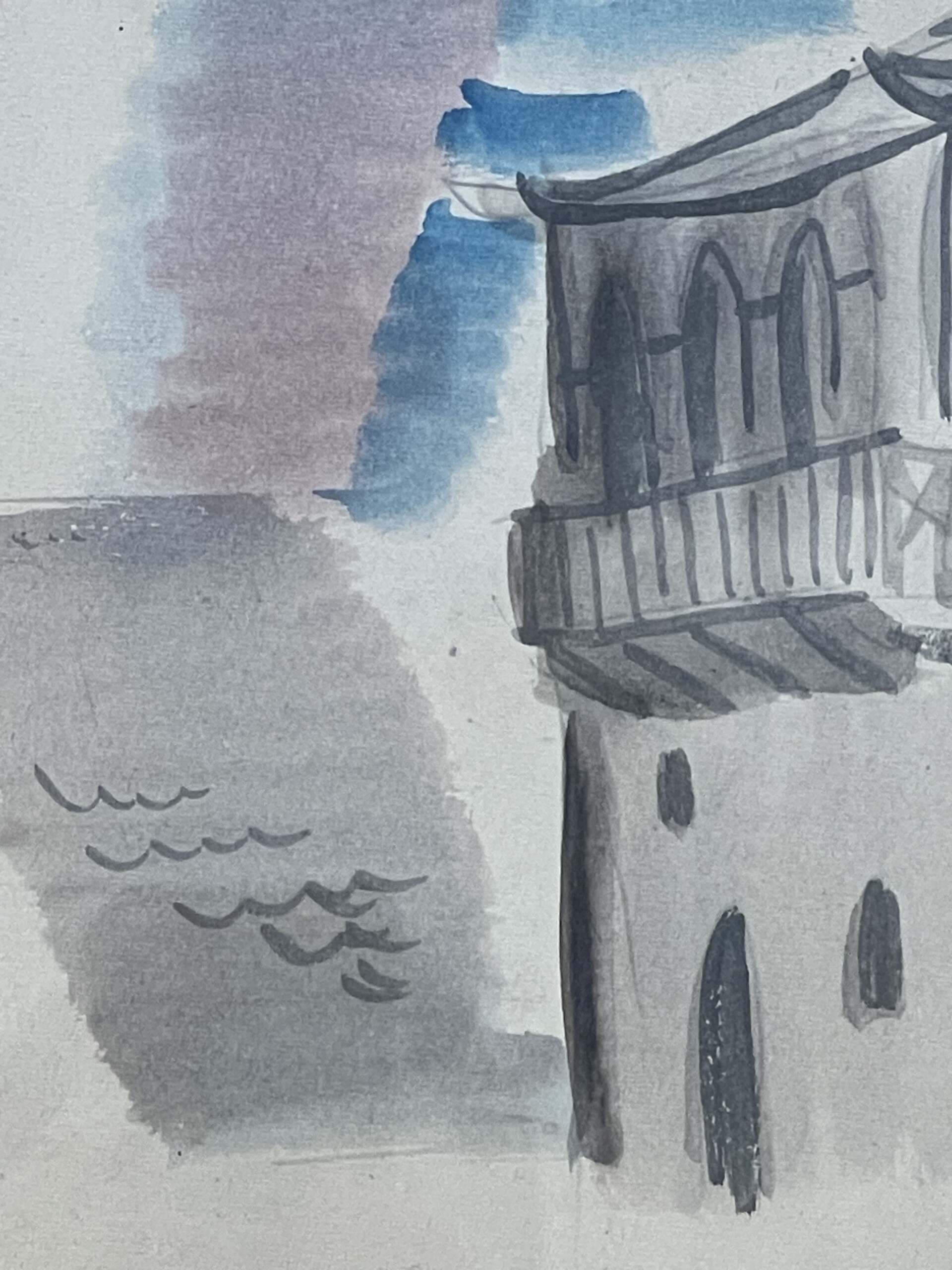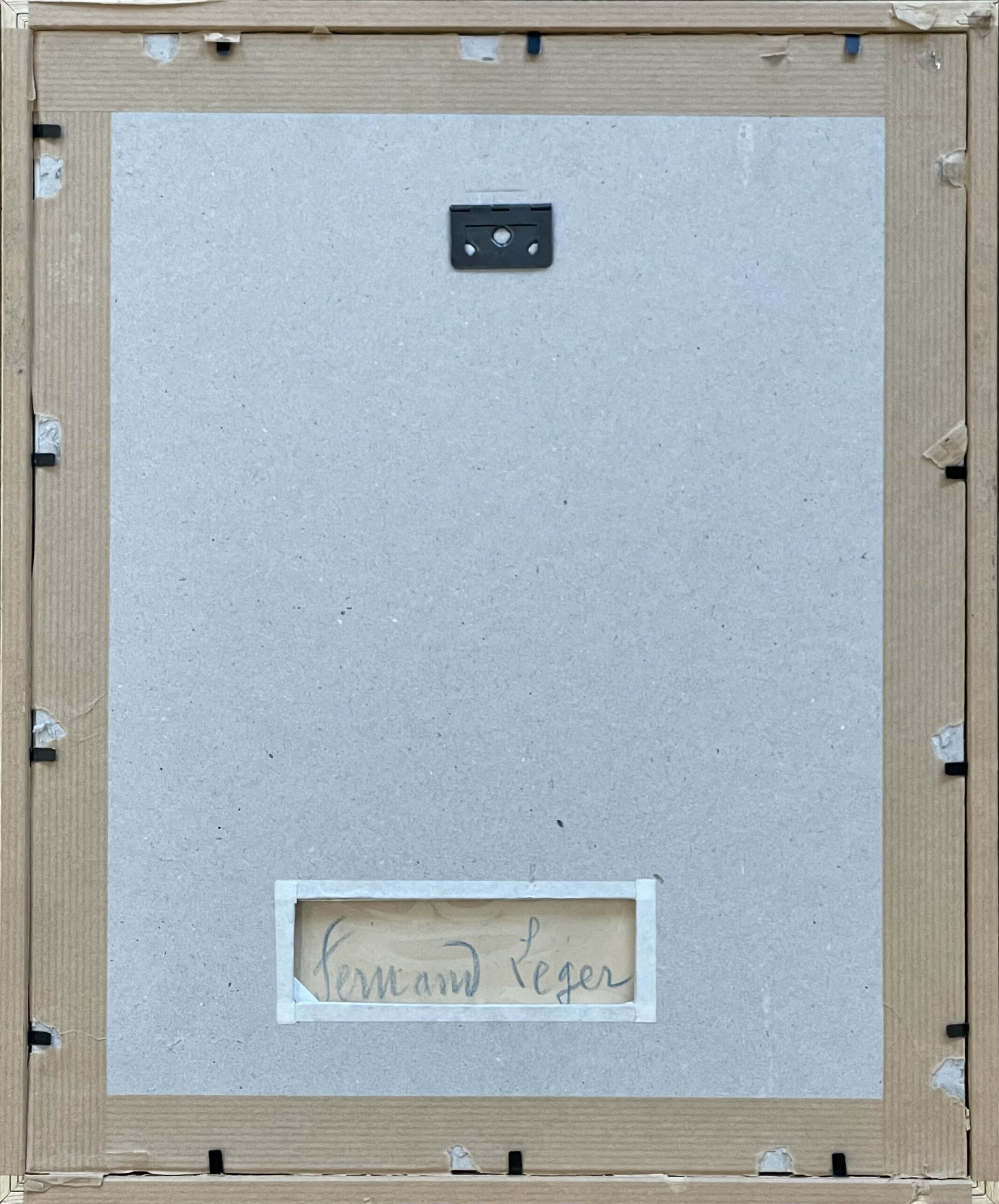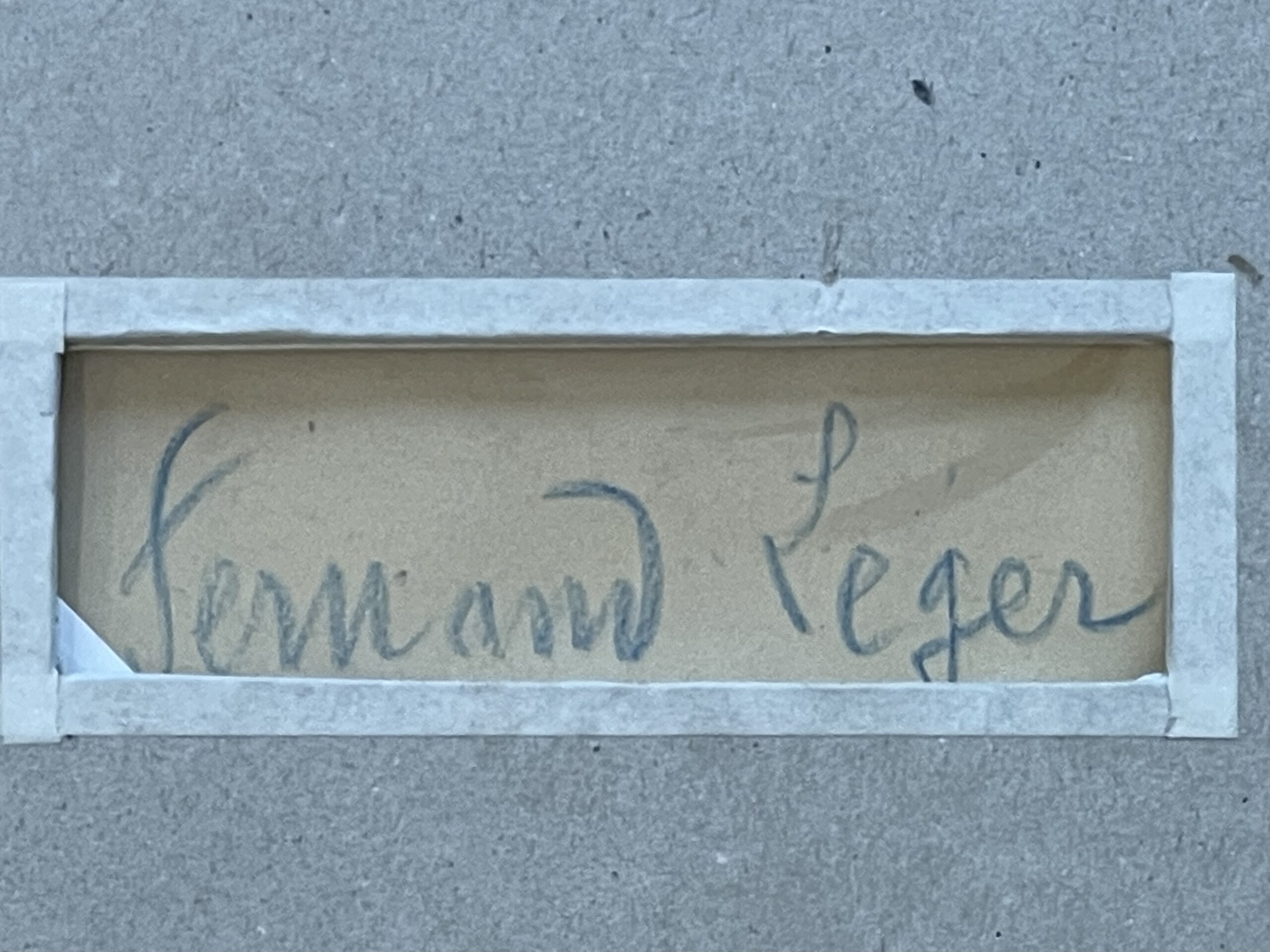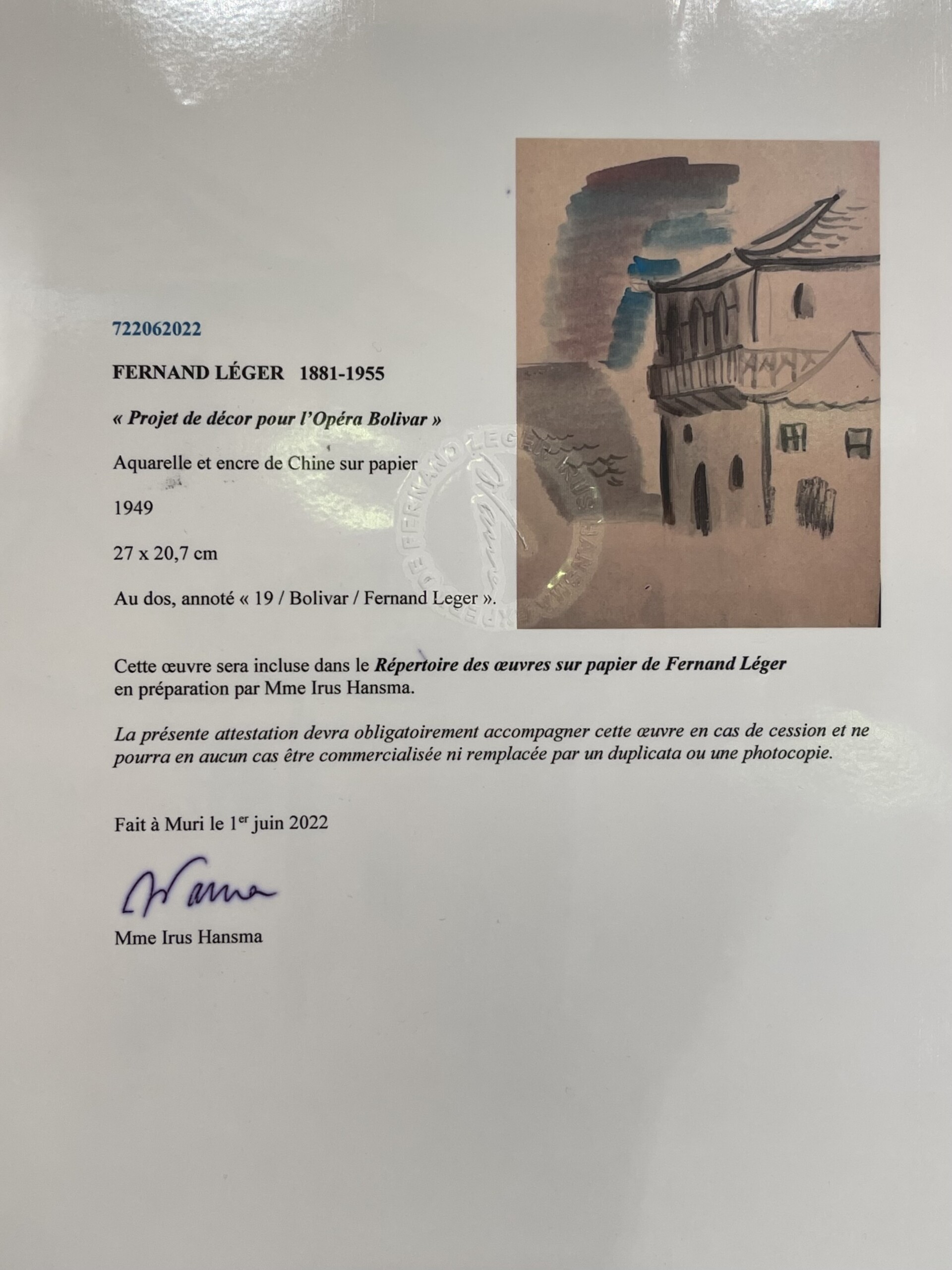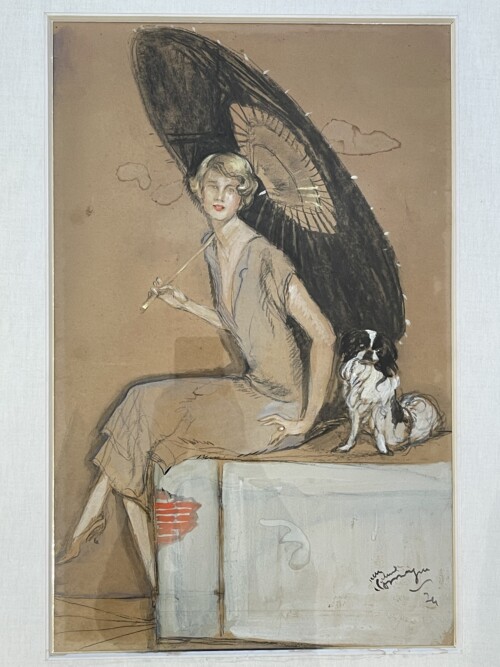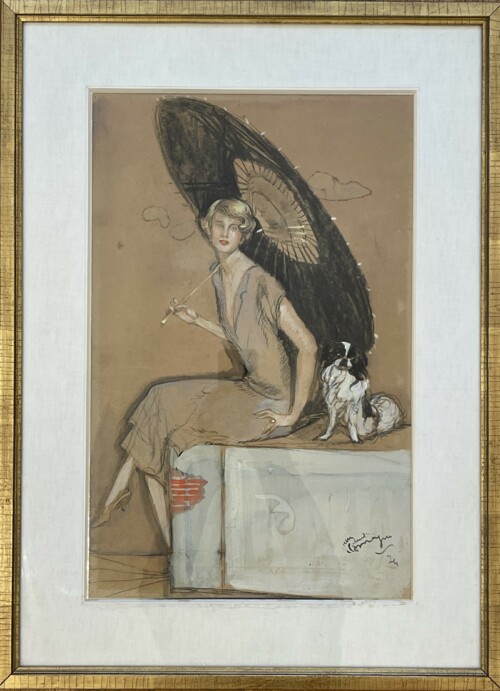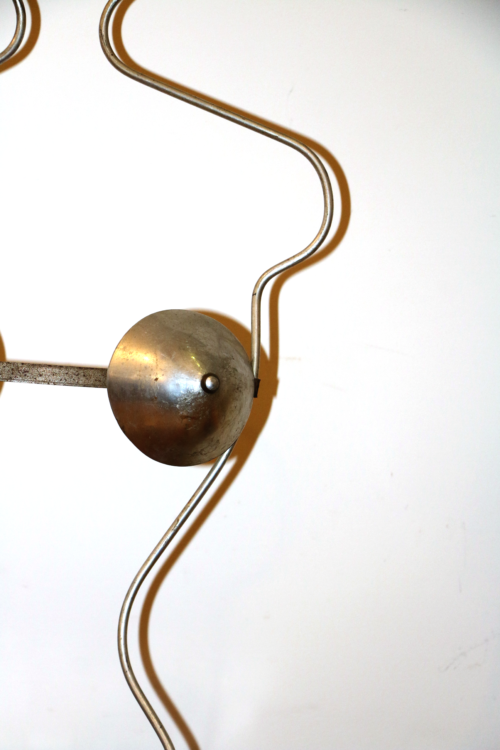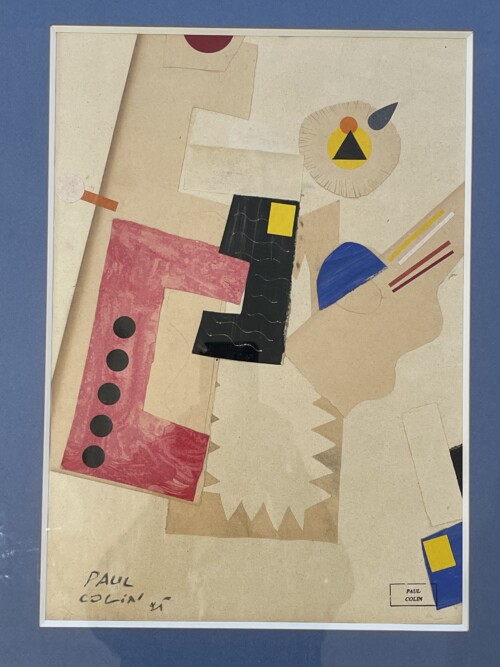Fernand Léger (1881-1955) était un peintre, sculpteur et cinéaste français, figure majeure de l’art moderne. Né en Normandie, il commence sa carrière influencé par l’impressionnisme avant de s’orienter vers le cubisme, qu’il réinterprète avec un style personnel plus géométrique et coloré. Marqué par l’expérience de la Première Guerre mondiale, Léger est amené à intégrer dans son œuvre des thèmes liés à la machine, à l’industrie et à la modernité. Proche des avant-gardes, il participe à de nombreux projets collectifs, dont des décors de théâtre, de ballets et même de films. Dans les années 1920 et 1930, il évolue vers un art plus figuratif, accessible et engagé. Il enseigne aux États-Unis pendant la Seconde Guerre mondiale, avant de revenir en France. Son œuvre prolifique et influente marque un tournant dans l’histoire de l’art du XXe siècle.
« Maison au balcon »
Aquarelle et encre de Chine sur papier.
Projet de décor pour l’opéra Bolivar.
Signé au dos, et inscrit « 19, Bolivar ».
Avec certificat d’authenticité.
1949.
L’opéra Bolivar, écrit aux Etats-Unis vers 1943 par Darius Milhaud, s’inspire du héros légendaire Simon Bolivar, surnommé « El Libertador », émancipateur des peuples d’Amérique latine du joug colonisateur espagnol. Milhaud pense immédiatement à Léger pour illustrer le livret de Jules Supervielle et concevoir les maquettes et les décors, dans une verve populaire et lyrique. La réalisation des décors est mise en œuvre par Maurice Moulène, qui a conservé les esquisses non numérotées et non utilisées pour la mise en scène définitive.
Dimensions
H : 26 cm ; L : 19,5 cm à vue (sans cadre)
H : 38 cm ; L : 31,5 cm (avec cadre)
Fernand Léger (1881–1955) was a French painter, sculptor, and filmmaker, and a major figure in modern art. Born in Normandy, he began his career influenced by Impressionism before turning to Cubism, which he reinterpreted with a more geometric and colorful personal style. Deeply affected by his experience in World War I, Léger began incorporating themes related to machinery, industry, and modernity into his work. Closely linked to the avant-garde, he took part in many collaborative projects, including set designs for theater, ballets, and even films. During the 1920s and 1930s, he moved toward a more figurative, accessible, and socially engaged art. He taught in the United States during World War II before returning to France. His prolific and influential work marked a turning point in 20th-century art history.
« House with Balcony »
Watercolor and India ink on paper.
Set design project for the opera Bolivar.
Signed on the reverse and inscribed “19, Bolivar”.
With certificate of authenticity.
1949.
The opera Bolivar, written in the United States around 1943 by Darius Milhaud, is inspired by the legendary hero Simón Bolívar, known as El Libertador, who freed the peoples of Latin America from Spanish colonial rule. Milhaud immediately thought of Fernand Léger to illustrate the book by Jules Supervielle and to design the models and sets, in a popular and lyrical style. The sets were executed by Maurice Moulène, who kept the unnumbered sketches that were not used in the final stage production.
Dimensions
H : 26 cm ; L : 19,5 cm (unframed)
H : 38 cm ; L : 31,5 cm (framed)
H : 26 in ; W : 19.5 in (unframed)
H : 15 in ; W : 12.4 in (framed)
